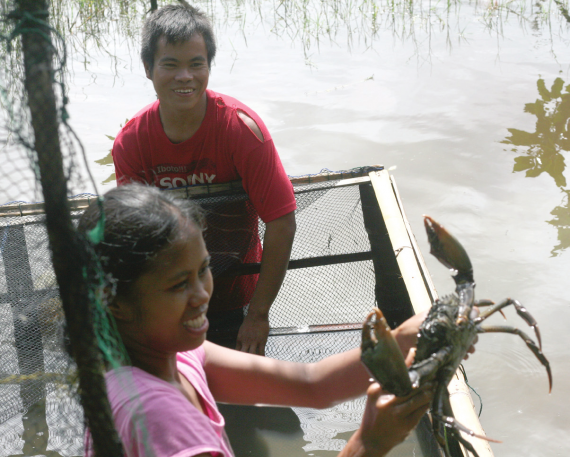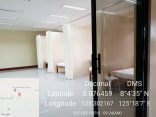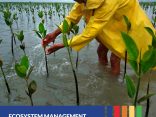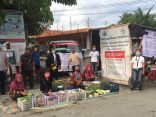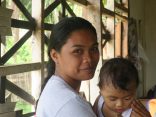Leonora Silawan, Noel Casungcad, Jose Molin, and Generoso Aguila from Barangay Balatasan have sold a lot of crabs during the recent fiesta of Calabanga municipality. A month before, they bought 103 pieces of crabs weighing about 200 grams each on the average. These have grown to King size or about one kilo a piece in time for the fiesta. The four share a common pond for their food production activity, crab fattening. They buy crab juveniles or crablets, or half-grown crabs which take a month or two to reach the saleable size, and feed them with trash fish Trash fish is always available in Calabanga.
Balatasan is a coastal barangay along San Miguel Bay. Most of the farmlands in Balatasan have been rendered unfit for rice cultivation by storm surges and saltwater intrusion. The barangay also found itself outside the flood control dikes constructed by the Bicol River Basin Development Program. On the other hand, the change has created opportunities for growing nipa palm, a mangrove species, and for farming of fish and crabs in brackishwater ponds.
Leonora, Noel, Jose and Generoso represent vulnerable households, which received livelihood support from the Food facility project. Initially, they were part of about 20 households who formed a production cluster to engage in crab farming. This initial attempt failed, because a significant number of members were not really keen in working with a production cluster. They would rather work individually, and did not abide by their obligations, resulting in serious financial losses to the production cluster.
Leonora’s group persevered in their desire to sustain crab farming as a successful alternative livelihood activity. They conducted a review of their operations, identified problem areas, and proposed solutions. A key decision made was to propose to the Food Facility project that those not supportive of working within a production cluster, and had been remiss in their duties, should already be excluded. Representing the group that wished to continue with crab farming, Leonora made a tearful presentation before an assembly of production clusters in Calabanga municipality the lessons they have learnt, and the new design of their crab-farming project. For their perseverance, and their positive attitude towards learning, Leonora’s group’s request for a “second chance” was granted.
Like other production clusters, Leonora’s group has to present s simple project proposal for the livelihood activity they wish to engage in. “It was very difficult for us to write even a simple project proposal, despite the training we had on project cycle management, community-based disaster risk reduction, and disaster preparedness. Now, I can better appreciate why we need to go through the process. It is helping ensure that our livelihood activity is economically feasible and sustainable,” Leonora shared in her Bicol language.
“In PCM, we were taught about objectives, results, activities and their relationships. We were taught about the format and contents of a simple project proposal. We also learned that sustainability should be ensured so that we will be able to reap the benefits of our efforts over a longer duration,” added Generoso. “And one way to make our crab farming project sustainable is to protect it from floods. Our barangay is very prone to flooding. A single flooding event can wipe out all the assets of our production cluster.”
The first PCM training conducted in Calabanga was during the first ACCORD project, to aid barangays design their small-scale mitigation projects. The knowledge they acquired from this training was applied in designing small-scale mitigation projects applying the natural resource management approach. The Food Facility project conducted a refresher training on PCM.
“The knowledge that we acquired from the ACCORD projects proved very useful to the design of our crab farming project,” volunteered Jose. “In the proposal, we had to identify possible hazards that could affect our crab farming project. Once the hazards were identified, we needed to introduce doable risk reduction measures. From the risk mapping that we did with ACCORD, we were able to identify abandoned ponds that are less prone to flooding.”
For his part, Noel has the following to share: “ To reduce the risk from flooding, we also needed to add height to the embankment, then enclosed the pond with a net to prevent the crabs from escaping especially when water overflow during heavy downpour or during a typhoon. We also learned from ASCEND the use of the seasonal calendar. Our calendar showed that demand for crabs will be very high in September during the Calabanga town fiesta and the Penafrancia fiesta in Naga City, and then again during Christmas and New Year. The same calendar also shows us that most flooding incidents occur in October and November. We have to weigh therefore the potential economic gains and the risks. The decision we have to during October and November can be very tough.”
In the past, Leonora would easily cry when teased that her production cluster was not doing well. The original crab farming production cluster that she was a member of was actually the first production cluster organized by the Food Facility Project in Calabanga. Thus expectations on the cluster were very high.
The challenge to make the crab-farming project of Leonora’s production cluster economically viable and sustainable is still daunting. Leonora, Generoso, Jose and Noel however are more confident now, that they are better equipped to face the challenges that are sure to come. They are grateful for the support of Food Facility, which included provision livelihood assets such as crab juveniles, trash fish and nets, and training on crab farming, PCM, financial management, leadership and organization. They are equally grateful for the disaster risk reduction knowledge and skills they acquired from the ACCORD projects, which they are able to apply in their livelihood project. Leonora is all smiles nowadays.

